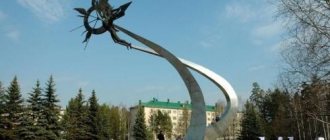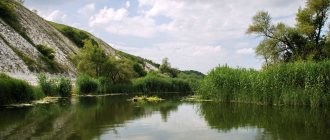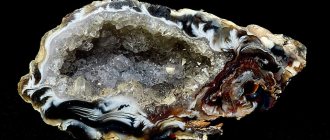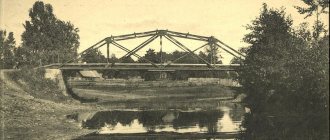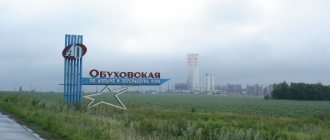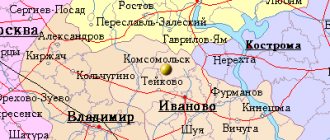Story
The founding date of Karasuk is considered to be the emergence of the village during the construction of the Altai Railway in 1912.
The first peg for construction was driven in in May 1912, not far from the place where the Karasuk-1 station is located. Construction of the railway on the Tatarskaya - Slavgorod section began in 1913. By the summer of 1916, the roadbed was brought to Karasuk, and already in January 1917, the regular movement of a goods and passenger train was announced, which arrived in Karasuk once a week. The station got its name from the Karasuk River, near which it was located.
The station developed quite quickly. Initially as part of the Chernokuryinskaya volost, then the village council. Until 1933, on the territory of the Novosibirsk region there were three settlements called Karasuk. Since 1929, the village of Cherno-Kurya has been renamed Karasuk. Accordingly, the area called Chernokuryinsky became Karasuksky. Until 1933, another regional center, the village of Krasnozersky, was also called Karasuk. After being renamed Karasuk, Black Kurya remained the center of the district for several years, and then it moved closer to the railway station.
In 1943, a single workers' settlement with a single name was formed. On June 3, 1954, in accordance with the Decree of the Presidium of the Supreme Soviet of the RSFSR, the workers' village of Karasuk was transformed into a city of regional subordination.
In 1960-1980, the city's infrastructure developed mainly due to the railway, which was and remains the city-forming center.
Map
| Karasuk: maps |
Karasuk: photo from space (Google Maps) Karasuk: photo from space (Microsoft Virtual Earth)
| Karasuk. Nearest cities. Distances in km. on the map (in brackets along roads) + direction. Using the hyperlink in the distance , you can get the route (information courtesy of the AutoTransInfo website) | |||
| 1 | Bagan | 47 (57) | NW |
| 2 | Burla (Altai region) | 48 (53) | SE |
| 3 | Krasnozerskoe | 83 (89) | IN |
| 4 | Halbstadt (Altai region) | 84 (123) | SE |
| 5 | Kupino | 85 (95) | NW |
| 6 | Slavgorod | 91 (93) | SE |
| 7 | Yarovoe | 97 (102) | YU |
| 8 | Khabary (Altai Territory) | 100 (213) | IN |
| 9 | Zdvinsk | 115 (137) | WITH |
| 10 | Herds (Altai Territory) | 117 (120) | SE |
| 11 | Satisfied | 136 (307) | NE |
| 12 | Verkh-Suetka (Altai Territory) | 141 (204) | IN |
| 13 | Kulunda (Altai region) | 143 (147) | SE |
| 14 | Chistoozernoe | 143 (166) | NW |
a brief description of
Located on the river. Karasuk, in the north of the Kulunda Plain, 678 km west of Novosibirsk.
Railway junction lines. Highway.
Territory (sq. km): 33
Information about the city of Karasuk on the Russian Wikipedia site
Historical sketch
Known since the end of the 18th century. like a village. Name by location on the river. Karasuk. Hydronym from the Turkic Karasu is a type of shallow river fed by groundwater outlets; in the name suk is an archaic form of the Turkic su “water”.
Workers' village of Karasuk since 1943. City since 1954.
Economy
Food industry enterprises (meat processing plant, flour mill, production of canned milk, dried vegetables, etc.).
Near Karasuk, on the lakes there is a fishery and a fish factory.
Main enterprises
BUTTER CHEESE AND DAIRY INDUSTRY
OJSC "Karasuk Milk Canning Plant"
632810, Novosibirsk region, Karasuk district, Karasuk, st.
Radishcheva, 16 Offers:
Animal butter, whole milk powder, dairy products
Museums, galleries, exhibition halls
Karasuk Museum of Local Lore 632868, Novosibirsk region, Karasuk district, Karasuk, st. Oktyabrskaya, 14
| Population by year (thousands of inhabitants) | |||||||
| 1939 | 7.3 | 1996 | 30.9 | 2008 | 28.7 | 2016 | 27.3 |
| 1959 | 20.0 | 2000 | 30.9 | 2010 | 28.9 | 2017 | 27.2 |
| 1967 | 24 | 2001 | 30.8 | 2011 | 28.6 | 2018 | 26.9 |
| 1970 | 22.6 | 2003 | 28.7 | 2012 | 28.5 | 2019 | 26.7 |
| 1979 | 25.5 | 2005 | 28.3 | 2013 | 28.4 | 2020 | 26.8 |
| 1989 | 29.4 | 2006 | 28.3 | 2014 | 28.1 | 2021 | 26.7 |
| 1992 | 30 | 2007 | 28.5 | 2015 | 27.7 | ||
Population
As of January 1, 2022, in terms of population, the city was in 546th place out of 1,115 cities in the Russian Federation.
Gender composition
According to the 2010 All-Russian Population Census, the permanent population of the city was 28,586 people, of which 13,221 (46.2%) were men, and 15,365 (53.8%) were women.
National composition
According to the 1939 census: Russians - 55.8% or 4055 people, Ukrainians - 37.7% or 2735 people, Kazakhs - 3.1% or 226 people.
Notes[edit | edit code]
- ↑ 12
The permanent population of the Russian Federation by municipalities as of January 1, 2022 (Russian). Retrieved April 27, 2022. Archived May 2, 2022. - Pospelov, 2008, p. 218.
- Karasuksky district (Russian). https://www.nso.ru/
. Access date: July 16, 2022. - All-Union Population Census of 1939. The size of the rural population of the USSR by regions, large villages and rural settlements - regional centers (undefined)
. Retrieved January 2, 2014. Archived January 2, 2014. - All-Union Population Census of 1959. The size of the urban population of the RSFSR, its territorial units, urban settlements and urban areas by gender (Russian). Demoscope Weekly. Access date: September 25, 2013. Archived April 28, 2013.
- ↑ 12345678
People's encyclopedia "My City". Karasuk (city) - All-Union Population Census of 1970 The size of the urban population of the RSFSR, its territorial units, urban settlements and urban areas by gender. (Russian). Demoscope Weekly. Access date: September 25, 2013. Archived April 28, 2013.
- All-Union Population Census of 1979 The size of the urban population of the RSFSR, its territorial units, urban settlements and urban areas by gender. (Russian). Demoscope Weekly. Access date: September 25, 2013. Archived April 28, 2013.
- All-Union population census of 1989. Urban population (undefined)
. Archived from the original on August 22, 2011. - All-Russian population census 2002. Volume. 1, table 4. Population of Russia, federal districts, constituent entities of the Russian Federation, districts, urban settlements, rural settlements - regional centers and rural settlements with a population of 3 thousand or more (unspecified)
. Archived from the original on February 3, 2012. - Register of settlements of the Novosibirsk region (prepared by the department of organization of management of the administration of the Novosibirsk region). Newspaper “Soviet Siberia”, No. 146, July 31, 2007 (unspecified)
. Retrieved January 14, 2015. Archived January 14, 2015. - Cities of the Novosibirsk region (number of inhabitants - estimate as of January 1, 2008, thousand people) (unspecified)
. Retrieved May 23, 2016. Archived May 23, 2016. - The size of the permanent population of the Russian Federation by cities, urban-type settlements and regions as of January 1, 2009 (unspecified)
. Retrieved January 2, 2014. Archived January 2, 2014. - Population of the Russian Federation by municipalities. Table 35. Estimated resident population as of January 1, 2012 (unspecified)
. Retrieved May 31, 2014. Archived May 31, 2014. - Population of the Russian Federation by municipalities as of January 1, 2013. - M.: Federal State Statistics Service Rosstat, 2013. - 528 p. (Table 33. Population of urban districts, municipal districts, urban and rural settlements, urban settlements, rural settlements) (undefined)
. Retrieved November 16, 2013. Archived November 16, 2013. - Table 33. Population of the Russian Federation by municipalities as of January 1, 2014 (unspecified)
. Access date: August 2, 2014. Archived August 2, 2014. - Population of the Russian Federation by municipalities as of January 1, 2015 (unspecified)
. Access date: August 6, 2015. Archived August 6, 2015. - Population of the Russian Federation by municipalities as of January 1, 2016 (Russian) (October 5, 2018). Retrieved May 15, 2022. Archived May 8, 2022.
- Population of the Russian Federation by municipalities as of January 1, 2022 (Russian) (July 31, 2017). Retrieved July 31, 2022. Archived July 31, 2022.
- Population of the Russian Federation by municipalities as of January 1, 2022 (Russian). Retrieved July 25, 2018. Archived July 26, 2022.
- Population of the Russian Federation by municipalities as of January 1, 2022 (Russian). Retrieved July 31, 2019. Archived May 2, 2022.
- Population of the Russian Federation by municipalities as of January 1, 2022 (Russian). Date accessed: October 17, 2022. Archived October 17, 2022.
- taking into account the cities of Crimea
- https://rosstat.gov.ru/storage/mediabank/bul_Chislen_nasel_MO-01-01-2021.rar Population of the Russian Federation by municipalities as of January 1, 2022 (1.85 Mb, 07/30/2021)
- Volume 1. Number and distribution of population. 5. Population of Russia, federal districts, constituent entities of the Russian Federation, districts, urban settlements, rural settlements - regional centers and rural settlements with a population of 3 thousand people or more // Results of the All-Russian Population Census. — 2012.
- All-Union Population Census of 1939. National composition of the population by regions of Russia (Russian). Demoscope
. Access date: November 17, 2022. - Karasuk Research Station
- Government of the Novosibirsk region
- ↑ 1 2 3 4
Sights of Karasuk
(unspecified)
(inaccessible link). Retrieved June 21, 2016. Archived February 4, 2022.
Education
There are six general educational institutions in the city: a gymnasium, a lyceum, three secondary schools and one basic school. There is a full-time and correspondence secondary school, a children's music school, a children's and youth center, an art school, a children's and youth sports school, Karasuk Polytechnic Lyceum (specialization: railway transport), PU No. 86 (specialization: agriculture) is currently closed, Karasuk Pedagogical College, also have representative offices of universities and colleges in Novosibirsk, Tomsk, Omsk and Berdsk on the basis of correspondence and distance learning for students. In the field of preschool education, there are 9 kindergartens in the city.
Dear dear Karasuk
We have a lot of achievements in culture and sports and we have a lot to do to take children away from basements and porches, from television, and to develop them. A large gym, excellent halls for boxing and hand-to-hand combat. Four years of training and we already have our first masters of sports in boxing. Young hockey players, track and field athletes, volleyball players, and skiers adequately represent the region at regional competitions. Our pride is the Sadko swimming pool. Today, according to schedule, we transport children from kindergartens and schools to classes from all villages of the region. This object is important not only for the city, but for the entire region. They have their own athletes, swimming sections and, most importantly, people have a need for such leisure; families go, swim, and relax.
Author: Klimenko N.V.
The Children's Art School in 2005, and the Children's Music School in 2008 were included in the Golden Book of Culture of the Novosibirsk Region. The performing level of the folk ensemble "Slobodka" of the Children's Art School and the children's variety orchestra "Bis Band" of the music school is such that they are known and invited to give concerts abroad. Creative groups of the music school and art school constantly participate in inter-district, regional, and all-Russian competitions. They were already in Italy, France, Macedonia. This requires some financial support, but we are going for it. Children gifted in the field of culture and sports receive scholarships from the head of the district and city. We are starting the construction of a new regional House of Culture, with a music school and library housed in it. There is a theater in the city called “On the Outskirts”. They were helped with the premises, and soon groups from other places will come to our premieres. Now the team tours a lot, they have transport. General education schools work in line with the national project. There are problems with schools in rural areas, the number of students is decreasing, the status of schools is changing, small schools are being closed, but not by choice. All kindergartens in our villages are operating, they are not fully loaded, we are merging them with schools, we are transferring primary care centers there, preserving the social sphere of the village.
In addition to the technical lyceum, in the city there will be a gymnasium with a humanitarian focus, there is a school with in-depth study of chemistry and biology, where future doctors and agricultural workers study. Another one focuses on patriotic education and sports training, but we need to train future customs officers and border guards. Parents and children now have the opportunity to choose a school based on the child's abilities. Our task is to create good, equal conditions in all educational institutions, to ensure that personnel problems are resolved, and that the material base corresponds to the times. 40% of the region's population lives in villages. All-Russian problems in agriculture have not spared us either. One of the acute problems now is the shortage of machine operators; many people from the village leave to work. The reason is low salaries. The district was allocated 13 million to compensate for natural and climatic conditions, but this is not enough. Problem areas need government assistance. In the southernmost arid part of the region, the Studenovskoye joint-stock company is located, and its economy is doing well. The farm works, develops, acquires equipment, livestock, pays wages and taxes. Farming is carried out stably at CJSC Kalinovskoye, CJSC Agrofirma Morozovskaya, CJSC Shilovo-Kurinskoye. And this is an example of people not giving up, working on the land, producing products. And they live, and our task is to help. Real concern for people will give much more than any prohibitions and empty promises. We try to live by this principle in our area.
Culture and art
Theater "On the Outskirts"
Founded by a resolution of the session of the Council of Deputies of Karasuk on June 15, 2005. The founder was the administration of Karasuk. The only drama theater in the city. In 2009, it began its IV theater season. The theater's repertoire includes both adult and children's performances. In April 2009, “On the Outskirts” went on tour in the NSO. Artistic director of the theater “On the Outskirts” A.P. Kobets.
Cinemas
Currently there is a cinema "Cosmos" in the city.
Museum of Local Lore
Main excursions:
- “Through the hall of history of Karasuk and the region”
- "Hall of the Great Patriotic War"
- "Hall of Flora and Fauna"
- "Hall of Archeology and Paleontology"
- "Through the Art Gallery"
The museum also hosts major exhibition projects, visiting and exchange exhibitions. The Karasuk Local History Museum was one of the nine museum sites in the Novosibirsk region that were entrusted with holding exhibitions from leading Russian museums in 2014.
Sport
The main sports facilities of the city:
- Lokomotiv Stadium"
- Swimming pool "Sadko"
- SK "Molodost"
- SC "Dynamo"
- Youth and Youth Sports School
- Ski base
- Sports life of the city of Karasuk
- IV Interdistrict Spartakiad of Education Workers
- X Spartakiad “Health” March 28, 2011
- X Spartakiad “Health” March 12, 2011
- On February 12, in Novosibirsk, on the basis of the French gymnasium No. 16, volleyball competitions took place as part of the 1st regional sports day for education workers of the Novosibirsk region
Famous people associated with Karasuk
- Yurchenko, Vasily Alekseevich - ex-governor of the Novosibirsk region
- Russkikh, Leonid Valentinovich - Hero of the Russian Federation. Participant in the Ossetian-Ingush conflict, the First and Second Chechen wars,
- Timonov, Vasily Nikolaevich - Hero of the Soviet Union. Participant of the Great Patriotic War.
- Landik, Ivan Ivanovich - Hero of the Soviet Union.
- Karnaushchenko, Marina Nikolaevna - Russian track and field athlete, Master of Sports of Russia.
- Loginov, Evgeniy Yuryevich - deputy of the State Duma of the Russian Federation. Leader of the unregistered party "Russian Breakthrough".
- Sorokin, Zakhar Artemovich - Soviet pilot, hero of the Great Patriotic War, Hero of the Soviet Union.
- Smetanin, Grigory Andreevich - senior observer pilot of the 10th separate reconnaissance aviation regiment, captain. Hero of the Soviet Union.
- Orlov, Yakov Nikiforovich - major of the Soviet Army, participant in the Great Patriotic War, Hero of the Soviet Union.
- Molochkov, Grigory Aksentievich - lieutenant of the Workers' and Peasants' Red Army, participant in the Great Patriotic War, Hero of the Soviet Union.
- Klimovsky, Nikolai Afanasyevich - colonel of the Soviet Army, participant in the Great Patriotic War, Hero of the Soviet Union.
- Molozev, Viktor Fedorovich - colonel of the Soviet Army, participant in the Great Patriotic War, Hero of the Soviet Union.
- Nabatov, Vyacheslav Vasilievich - Russian Soviet painter, member of the St. Petersburg Union of Artists.
- Trakhimenok, Sergei Alexandrovich - writer, doctor of legal sciences, professor. Secretary of the Writers' Union of Belarus.
- Volkov, Andrey Alekseevich - lieutenant of the Soviet Army, participant in the Great Patriotic War, Hero of the Soviet Union.
- Rubezhansky, Pyotr Nikolaevich - Russian statesman and railway manager, advisor to the President of Russian Railways V. I. Yakunin.
Attractions
- Temple in the name of the Holy Apostle Andrew the First-Called.
- Monument to the heroes of the civil war.
- Locomotive-monument L-3609. Installed in 2005 in honor of the Hero of Socialist Labor Alexander Dorofeevich Parfenov and his assistant Valentina Burtenko.
- Memorial of Military Glory. The names of more than 5,000 natives of the Karasuk region who died during the Great Patriotic War are immortalized on the pylons of the memorial, and 9 busts of fellow countrymen - Heroes of the Soviet Union - are installed.
- Memorial of Labor Glory. Opened in 2015. The first monument to home front workers in the Novosibirsk region.
- Melkovsky mound (Lake Melkoe).
- Kurgan (village Blagodatnoe).
- Water tower built in 1915.
- Salt Lake - healing mud and salt water that can keep a person afloat without moving (at the moment, there is a drainage canal adjacent to it to drain swamp water from the city limits).
